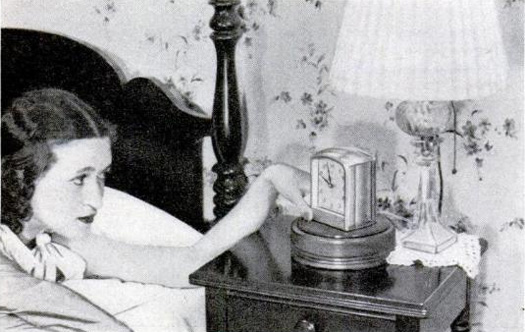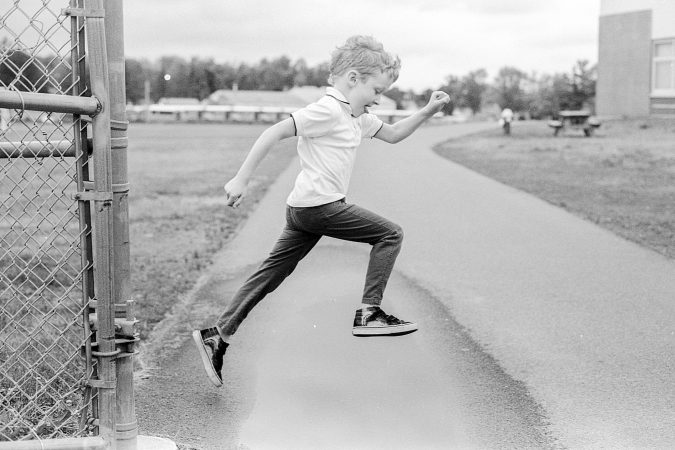

Every new year brings with it the urge to start fresh, make resolutions we won’t keep, and clean out that closet that avalanches every time we open it. But one weekend redesigning your bedroom can have benefits that last the whole year—maybe longer.
The most recent nationwide data we have on sleep is from 2014, but it shows 35 percent of us aren’t getting the recommended seven hours. And there’s reason to believe that the COVID-19 pandemic and other stressors have made that problem worse. Research also shows bedroom environmental conditions affect the severity of sleep disorders such as obstructive sleep apnea. A few simple changes should have you dozing off faster in no time.
Play Tetris with your furniture, windows, and doors
Making everything look like an Insta-friendly bedroom is one thing. Choosing the best possible layout for sleeping is another. In a Sleep Junkie survey of 1,064 people, the setup most associated with restful sleep involved centering the headboard against one wall, positioning the bed near a window to the left or right of the bed, with the door on the opposite sidewall. The three least-liked setups all involved the door in line with the foot of the bed. Maybe we are all scared of sitting up and seeing the boogie man creeping in, and direct sight of the door is anxiety-inducing? But despite certain patterns, the percentages of people who associated each layout with a good night’s sleep did not vary too widely. This suggests there’s more at play than “one layout to rule them all.”
Rizwana Sultana, a pediatric sleep medicine specialist and assistant professor at the University of Texas Medical Branch at Galveston, says the design of your bedroom should be tailored specifically to you. “[Use] a design which appeals to you, feels comfortable, and provides a sense of calm,” Sultana says. So if you feel most comfortable staring straight into the eyes of whoever (or whatever) enters your room, set your bed up right in front of the door. But before you move anything, take some time to think about what you like and don’t like about your current arrangement and why it makes you feel that way.
Don’t forget to consider what’s outside your bedroom, too. Drew and Jonathan Scott, stars of HGTV’s The Property Brothers, recommend against arranging your bed facing an eastern window, to prevent sunlight from waking you up too early. In addition, if you have a shared wall, move your headboard away from it to “put as much distance between your ears and your neighbors,” Drew says.
Get your paintbrush ready
As you browse Pinterest for the perfect combination of bedroom colors, consider the science behind color and catching Z’s. Scientists have well-established the connection between color choice and sleep, and one study found that participants sleeping in a room with colors they liked helped them fall asleep faster. Additional research proved university students felt much more calm inhabiting blue areas, which could help them relax and rest. The students also chose lighter versions of each color for interior spaces than they would for other settings and preferred white ceilings, which the researchers connected to feeling like the room was taller.
“Blues and greens create a comforting, relaxing environment that will give you the best opportunity at a deep, full night’s sleep. However, if you’re in a room that struggles for natural light, you might consider a lighter hue like lavender,” Jonathan Scott says. Drew adds that you should avoid dramatic colors like yellow and red, and notes that they are hard to style and coordinate with furniture as well.
[Related: 5 great spots for LED strip lights around your home]
If repainting a bedroom seems overwhelming, consider integrating these calming colors into your decor instead, and you can even use lavender as a calming scent for bedtime too.
Rethink window coverings
While you might be obsessed with a specific curtain pattern, it’s more important to design your room specifically to control lighting. That’s because the relationship between great sleep and a dark room goes much deeper than “wake up when it’s light and fall asleep when it’s dark.” Instead, light helps maintain our circadian rhythms—our internal clocks that tell us it’s bedtime or wake time—and affects melatonin production in our bodies. If you are hoping to rise with the sun and fall asleep at sundown, exposure to only natural light is important. However, too much artificial light can hurt our health, misaligning our circadian rhythms. Poor circadian rhythm management is even associated with health conditions such as mental illness.
To create the perfect lighting settings in your room, Jonathan Scott recommends layered window coverings, which he says will help you adapt to light changes throughout the seasons. “Pair sheer shades with blackout curtains for maximum light coverage,” he says. For example, when you notice the sun rising earlier and you are waking before your alarm clock, you can pull the blackout curtains closed before bed to prevent an early morning. Conversely, if you are enjoying some moonlight trickling in during the dark winter mornings, you can just use the sheer shades.
Ditch your phone for an old-fashioned alarm clock
It might seem impossible to rid your bedroom of cell phones, but scientists have explored how blue light might interfere with our circadian rhythms, hence all those warnings you’ve seen about eliminating your bedtime doomscrolling or Netflix binging routine. To commit to de-teching your bedroom (in addition to your trusty blue light glasses) leave phones on a small table outside the room so you can still hear them ring in case of emergencies, but can’t easily reach them—midnight scrolling can make it harder to fall asleep. If you’re worried about waking up on time, switch to a traditional alarm clock but make sure the artificial light isn’t too bright.
[Related: The world needs dark skies more than ever. Here’s why.]
You can also cut blue light out of your life altogether by setting an alarm to turn off electronics an hour before bedtime and/or enacting the screen time limitations built into your phone. If you aren’t comfortable being far from your phone overnight or want to work your way up to leaving it out of the room, you can also silence notifications or put it deep inside a bedside drawer instead.
Declutter and give yourself some extra space
Few things are more frustrating than moving piles of laundry from the bed, to a chair, to the floor, and back again every day (and tripping over them at night). That frustration stays with you: “An uncluttered room can give a sense of spaciousness and one can unwind easily,” Sultana says. The same Sleep Junkie study we mentioned earlier revealed that 73 percent of people with a clean bedroom said they slept well, compared to 53 percent of people in messy bedrooms who reported they slept well. So try a five-minute tidying up spree, including making your bed, to see how that works for you.
Ensuring there’s room for everything, whether it goes into a closet or under-the-bed storage, can go a long way to keeping things clean, Jonathan Scott says, joking that your layout should be able to accommodate a little sleep walking. “Give yourself plenty of room to be able to get into and get out of bed, too,” he says. “This is the one room of your house where you might be tempted to walk through it half-asleep, in the dark. The design needs to be as forgiving as possible.” It may also be worth finding ways to get bigger items off the floor—if you have a TV in the room, Drew recommends hanging it on the wall instead of placing it on a bulky stand or console.
If none of this works after remodeling to your heart’s content, all of our experts say you are just going to need a more comfortable bed. And if that still doesn’t work, you should consider talking to your doctor about insomnia.














